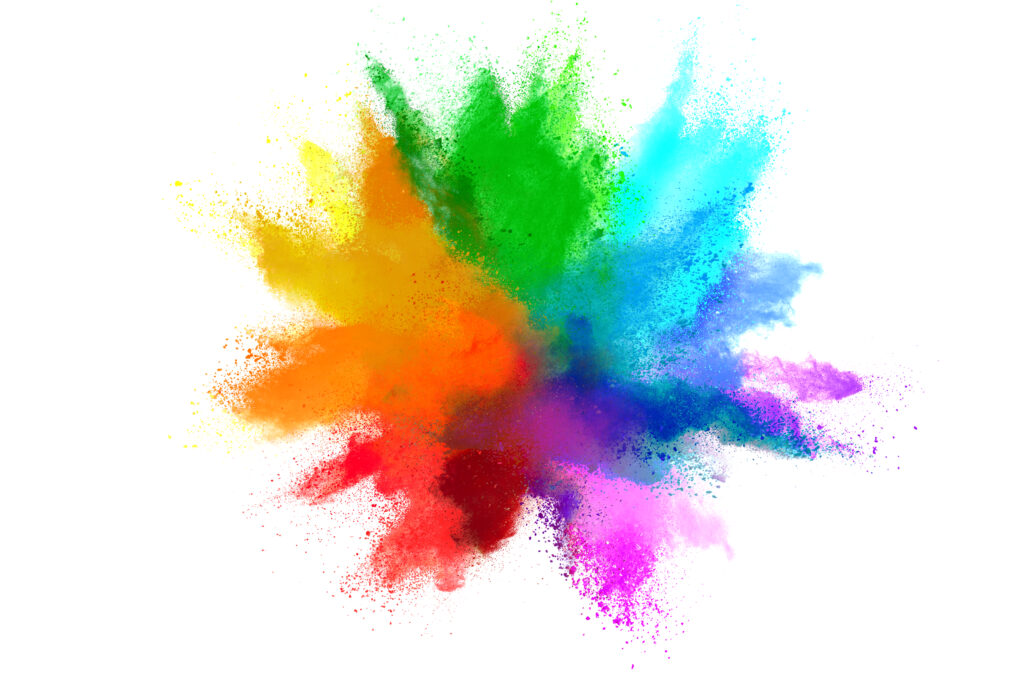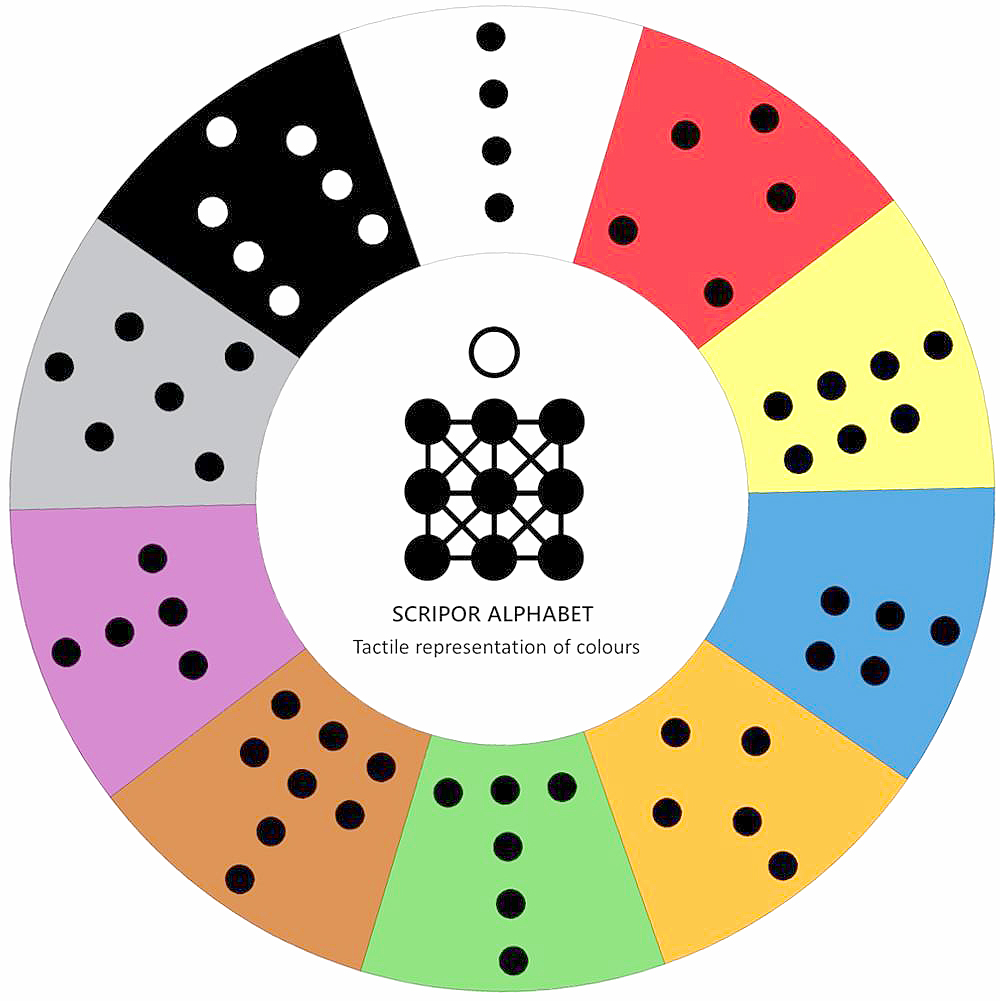A world of colors
One of the first things a child learns about the outside world is related to the concept of color. It is an accessible concept even at a young age and a first way of structuring the immediate environment.
Precisely because of this level of accessibility, color has become, over time, an easy means of transmitting information, building, from a cultural point of view, an entire symbolism around colors.
There are areas of daily life where we can talk about a standardized and universal conventional use of colors, especially regarding traffic signs, signaling dangerous situations, marking brands, logos, etc.
A world where information comes to people through them. However, not for people with visual disabilities.


What is the Scripor alphabet and how does it work?
The tactile color alphabet, known as the Scripor alphabet, was named after its creator, Mr. Tudor Paul Scripor. The word “color” – regardless of language, dialect, culture, or geographic location – has been reduced to a unique, simple, and universal symbol. Color is represented by a combination of dots, which are positioned in a cell similar to the Braille alphabet.
Using the principle of Universal Design*, the Scripor alphabet algorithm is based on the internationally recognized theory of colors*, representing the three primary colors: RED, YELLOW, BLUE; secondary colors: ORANGE, GREEN, PURPLE; tertiary color: BROWN; and achromatic colors: GRAY, WHITE, and BLACK.
This coding system now allows the visually impaired to effectively read, write, identify, recognize, and differentiate colors.
Enriching the Braille heritage
The Scripor Alphabet is a concept based on the extension of the Braille alphabet and is used only for colors. A Braille cell is composed of six dots; two parallel vertical rows of three dots each.
The Scripor Alphabet cell is composed of ten dots in total; three columns, three rows, and an orientation dot, or reference dot. It is omnipresent in representing each color and is positioned above the second column of the first row.
The dot positions are identified by numbers from one to nine and the number 10 is assigned to the orientation dot. It serves a dual role:
- it determines the position of the cell (similar to the number 12 on a clock dial or the north on a compass)
- it eliminates any confusion between Braille and Scripor representations.



Representation of colors and shades
A combination of dots from a single cell is used to represent a color. An adjacent cell, next to the base color, represents light or dark shades, tones, saturation, or intensity of colors.
Removing Chromatic Barriers
Color is present in every industry and aspect of daily life. In the absence of a universal standardization of colors, people with visual impairments face daily integration difficulties or even discrimination.
Alfabetul Scripor închide distanța dintre culori și persoanele nevăzătoare prin reprezentarea în mod tactil a culorilor.
Advantages of using the Scripor Alphabet
A new world, full of options
Products, services, and jobs are becoming more inclusive thanks to the Scripor Alphabet. This concept significantly improves the quality of life for people with visual impairments, provides a sense of belonging, and increases safety and autonomy.
Millions of colorless items multiply into trillions of options for people with visual impairments, turning them from almost non-existent customers into satisfied customers who come back. By using accessible labels, accessible or provided/free, blind athletes can now equip their martial arts belts and recognize flags and medals.
Blind or visually impaired people could soon buy healthier/ecological foods, choose their favorite products based on color alone, and buy clothing, cosmetics, board games, and toys, becoming more independent and confident.
Safety and security
By implementing this concept, products become safer for everyone. Blind people are now offered the possibility of pre-checking a product’s properties. The confusion of purchasing a product for a different purpose than it was created for is eliminated, an incident that unfortunately occurs frequently in the world of the visually impaired.
Chromatic barriers are also removed thanks to the short learning time of the Scripor Alphabet. Just as sighted children learn colors before the letters of the alphabet, blind children can learn the color alphabet before the Braille alphabet.
**The assimilation time of the Scripor Alphabet is approximately 30 minutes. For those familiar with the Braille alphabet, the learning time of the Scripor Alphabet is much shorter. The average assimilation time for the Braille alphabet is 2 years.
"One of the first benefits is emotional, but important. This is confidence."
Diana Danciu, 23 year-old blind student.
